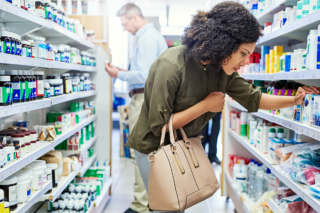 It is more important than ever for retailers to leverage their market power and influence to drive hazardous chemicals out of consumer products, packaging, and global supply chains.
It is more important than ever for retailers to leverage their market power and influence to drive hazardous chemicals out of consumer products, packaging, and global supply chains.
Over the past year, the Trump Environmental Protection Agency (EPA) continued with weak implementation of recent reforms to the Toxic Substances Control Act (TSCA). The EPA has weakened or delayed action on hazardous chemicals that can cause cancer, reproductive harm, and other serious illnesses. And the U.S. Food and Drug Administration (FDA), operating under a sixty-year-old law on food additives, has failed to use modern science to assess the safety of thousands of toxic chemicals used in food packaging.
Retailers can play a critical role in filling this growing regulatory void by adopting and implementing comprehensive safer chemicals policies to phase out and eliminate chemicals harmful to our public health and environment.
Retailers that are not properly managing chemical risks can lose the trust of their customers, lose market share to competitors, and may even risk facing significant financial liabilities. Meanwhile, those businesses that manage chemical risks can reap great rewards. A recent extensive research study into U.S. consumer packaged goods (CPGs) found that 50% of CPG growth from 2013-2018 came from sustainability-marketed products (which include products marketed as free from certain toxic chemicals), despite the fact that sustainability-marketed products represented only 16.6% of the CPG market in dollar sales in 2018. The researchers also found products marketed as sustainable grew 5.6 times faster than conventionally-marketed products.
This report uncovers a growing sustainability trend amongst North America’s largest retailers over the past year: major retailers are increasingly adopting and implementing policies that restrict classes of toxic chemicals such as PFAS and ortho-phthalates, in the products and packaging they buy and sell. This is helping to bring safer products into the hands of consumers all across North America and drive the development of safer chemicals and green chemistry solutions.
In this report, you can learn about which of the evaluated retailers are leading the market movement to safer chemicals, how they can continue to implement and expand corporate chemical policies, and which of the evaluated retailers are lagging behind the other evaluated retailers.
As consumers, we have incredible power to drive positive change in the marketplace to build a toxic-free future.
You can use this report to help inform which companies you’ll support and those that you will avoid this holiday season and in the year ahead. For those evaluated companies that are lagging behind the other evaluated retailers, leverage the power of the purse and join us in raising your voice to call for urgent reform. You can use our “take action” feature to write to the fourteen companies that make up the 2019 retailer report card Toxic Hall of Shame. You can also send customized tweets to all 43 companies, thanking those that have been improving and urging the laggards to step up.
Our campaign’s theory of change is working – by publicly benchmarking companies, raising the voices of thousands of consumers, publishing new scientific research, and engaging companies in dialogue and sharing policy recommendations, we are driving a competitive race to the top in the retail sector.
Together we can hold big corporations accountable to ensure the stores we shop at “mind the store.”